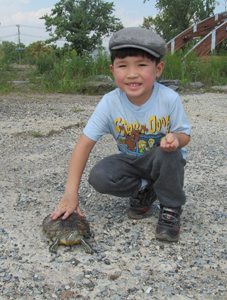During a long career zoo career that found me working with animals ranging from ants to elephants, I’ve had many occasions to review veterinary and pathology reports. In doing so, I’ve come to understand that zoonotic diseases – those that can pass from animals to people – are a potential concern in the keeping of any pet. Most people associate Salmonella, the best known zoonotic, with reptiles, but nearly any animal, including dogs, cats and birds, may harbor this bacterium. Fortunately, Salmonella and other infections can be avoided by following a few relatively simple rules.
Note: This article is not meant to replace a doctor’s advice, nor is it intended to discourage pet ownership. By observing a few simple precautions, the most commonly-encountered problems can be effectively managed. Please post your questions and concerns below, and be sure to consult your doctor or veterinarian for specific information concerning disease prevention and treatment. Read More »
 That Reptile Blog – Reptile, Amphibian and Exotic Pet Care and Information
That Reptile Blog – Reptile, Amphibian and Exotic Pet Care and Information



